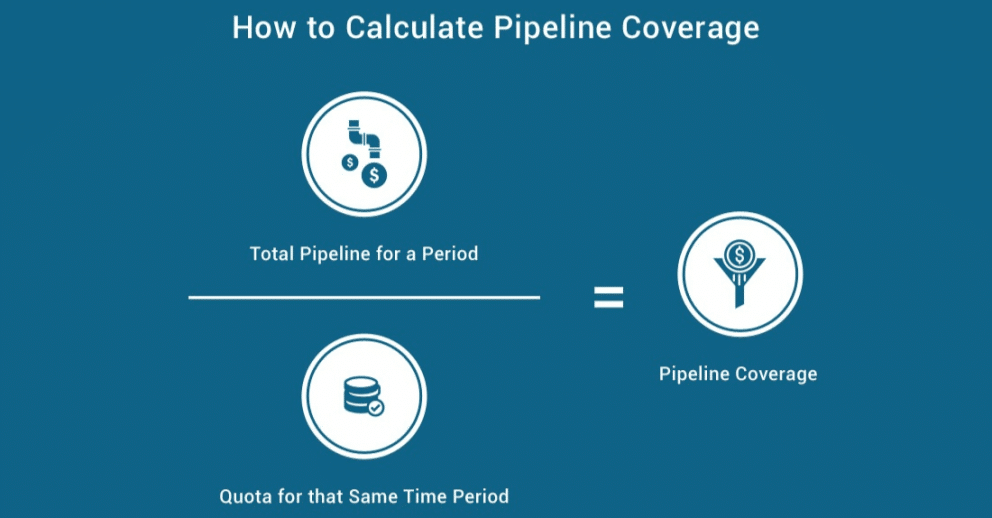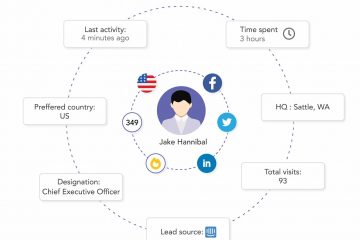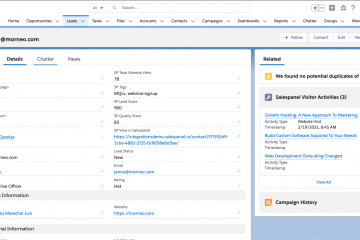How Can Pipeline Coverage Help Your B2B Sales Operation?
DEFINITION
Pipeline coverage is the ratio between your total sales pipeline value and your revenue target. Keeping this metric in check helps you predictably generate revenue every month.
Marketing creates opportunities and sales convert these opportunities into customers. Having a motivated and driven sales team is always a positive to have. That, however, in itself isn’t enough to assure target completion. There are forecasts, reviews, data analysis, AI, and ML aiding sales operations too.
Even with all of this, hitting the set sales target is not assured. This is why it is always safe to have a fail-safe mechanism where revenue can be predicted and things can be sorted proactively in the case reaching the desired target becomes unlikely.
The fail-safe analysis model here is known as Pipeline Coverage. Pipeline coverage is the ratio between your total sales pipeline value and your revenue target.
What is a Sales Pipeline?
Let’s quickly discuss the sales pipeline first. A sales pipeline is a visual representation of your sales operation specifically displaying where every potential customer is along the purchase process.
A sales pipeline creates an outline of all the steps in a buyer’s customer journey as they move from being a lead to making a purchase and becoming a customer.
Having your sales process divided into steps grants you more control over the variables. Managing the sales process and keeping a track of all the leads and outcomes becomes far easier this way.
And, having potential customers and understanding where they are is key to calculating pipeline coverage.
What is Pipeline Coverage?
Pipeline coverage is the total dollar value of your pipeline relative to the target sales quota for the same period. Or to simplify it even further, pipeline coverage is the total value of leads you have in your sales pipeline relative to your revenue target.

Source: brainshark.com
The Principle behind this is, that no firm has a 100% conversion rate. So, to complete a sales target, a firm must have a certain excess of leads in their pipeline relative to their sales target and conversion rate.
Compensating for the conversion rate by carrying an excess of leads in your pipeline ensures your business hits the sales target consistently.
Traditionally, the general rule of thumb for pipeline coverage has been to maintain a coverage ratio of 4:1 or 3:1. This means, having an excess of 3 to 4 times the value of leads relative to the target value of leads for that period.
The reason why this has worked until now is that a lot of firms with traditional setups have a conversion rate between 25% to 33%. This coincides with the coverage ratios of 4:1 and 3:1.
Now that we have the fundamentals of pipeline coverage out of the way, let us see how to calculate pipeline coverage.
How to Calculate Pipeline Coverage?
Calculating pipeline coverage is relatively easy since it is a simple ratio. The formula is:
Pipeline Coverage = (Total Pipeline Value) / (Target Sales Value)
Let us assume that the total pipeline value of a firm for the current month is $2,400,000 and the target sales value is $600,000. To calculate the pipeline coverage, we will have to substitute these values in the above formula.
Accordingly,
Pipeline Coverage = (total pipeline value) / (target sales value)
= ($2,400,000) / ($600,000)
= 4x.
Thus, the pipeline coverage is 4 times or the pipeline coverage ratio is 4:1. What this means is the said firm has 4 times the value in their pipeline for the current month relative to the value of their sales target for the same month.
This does seem to be in line with the traditional thumb rule for pipeline coverage. For this coverage ratio to be effective, the firm needs to have a conversion rate of 25%.
On the other hand, you can identify your firm’s ideal pipeline coverage ratio by taking into account your firm’s conversion rate. Knowing this relation we can ascertain that your firm’s ideal pipeline coverage ratio is the inverse of your conversion rate.
So if a firm has a conversion rate of 20% then,
Ideal Pipeline Coverage = 1 /(20%)
= 1 / (0.20)
= 5
Using Pipeline Coverage For Sales Operations
Sales pipeline coverage allows for a lot of calibrations to various sales operations. A capable sales leader when equipped with pipeline coverage can consistently hit sales targets.
Let us consider each scenario:
You Have A Higher Than Average Pipeline Coverage Ratio
A higher than average pipeline coverage ratio is an indicator of two possibilities; either your sales team isn’t as competent at converting leads or the leads you’re generating are not qualified.
For the first possibility, a higher than average pipeline coverage ratio results from having to over-compensate for a low conversion rate. If that’s the case, you can train your sales team and make them more effective at converting leads.
For the second possibility, a higher than average pipeline coverage ratio results from having too many low-quality leads in your pipeline. Either the lead generation process or lead qualification process is at fault here. In simple words, either you are generating too many bad leads or your sales team is not getting properly qualified leads.
Once the issue has been identified, corrective actions can be taken to eliminate the issue.
You Have A Lower Than Average Pipeline Coverage Ratio
A lower than average pipeline coverage ratio is an indicator of two possibilities; either your sales and marketing teams are misaligned or your marketing function isn’t performing as intended.
For the first possibility, when the two functions are misaligned, there can be a lack of coordination resulting in there not being enough lead generation to maintain a healthy pipeline coverage ratio.
In this case, corrective actions need to be taken to have these two functions aligned to a single goal of generating revenue growth.
For the second possibility, when your firm’s marketing operations aren’t performing optimally, it becomes difficult to generate enough quality leads to maintain a healthy pipeline coverage ratio. In this case, more resources can be allotted to marketing, or the marketing team can be trained and educated to perform better.
A Sales Representative Has Strong Pipeline Coverage
In this scenario, the pipeline coverage reveals that the particular sales representative has enough leads in his pipeline. Accordingly, his focus must shift to the lower section of a sales pipeline, i.e. to converting leads.
With opportunities lined up already, the sales representative must concentrate on providing a good customer experience, a value-laden deal, and other allied activities that contribute to the process of conversion.
A Sales Representative Has Weak Pipeline Coverage
In this scenario, the weak pipeline coverage indicates that the particular sales representative doesn’t have enough leads in his pipeline to compensate for the conversion rate.
If the required number of leads does not convert, the representative will have to go back to generating leads before he can engage with them. This loss of valuable time can be averted using pipeline coverage as an indicator.
Having the sales representative focus on the top of the funnel activities instead, he can add more leads to the pipeline. This will improve his pipeline coverage and then he can focus on closing more deals.
If sales is not generating leads themselves and has marketing generate leads for them, the team would
If you’re regularly calculating your pipeline coverage ratio, here are the optimizations you can achieve.
First of all, you will need to know what the ideal pipeline coverage ratio for your firm is. When you calculate your pipeline coverage ratio on a regular interval, you can compare it against your firm’s ideal pipeline coverage ratio to gain insights.
The Pipeline Coverage Ratio Falls Below Ideal
This is usually an indicator that there are issues at the top of the sales funnel. Inability to generate quality leads can be caused by a lot of factors.
Targeting the wrong audience, having an inaccurate Ideal Customer Profile, or other issues that affect the effectiveness of the marketing function could be at work here.
A sales manager needs to identify this indicator quickly and sort the issue before the sales pipeline begins being plagued by air pockets and disruptions.
The Pipeline Coverage Ratio Rises Above Ideal
This is a general indicator of there being issues at the bottom of the sales pipeline. Inability to convert leads or leakage in the pipeline can be attributed to many factors.
Lack of lead nurturing, inability to provide personalization or a good customer experience, or being unable to convince your leads of the value you provide can result in a severe leakage in the pipeline.
In other scenarios, the pipeline coverage ratio rises above normal when the sales team is either not effective at converting quality leads or is being fed low-quality leads from the top of the funnel.
In either case, a sales manager has to act immediately and take corrective action before the sales pipeline gets overloaded with even more leads.
Our Final Word
Having a healthy sales pipeline is the key to generating revenue growth. The pipeline coverage ratio is a good indicator of a sales pipeline’s health.
A varying degree of issues can be identified using regular measurement of pipeline coverage ratio. This allows you to keep both the sales and marketing functions in check and aligned.
With these operations taken care of, you can focus on growing revenue for your firm.
Sell more, understand your customers’ journey for free!
Sales and Marketing teams spend millions of dollars to bring visitors to your website. But do you track your customer’s journey? Do you know who buys and why?
Around 8% of your website traffic will sign up on your lead forms. What happens to the other 92% of your traffic? Can you identify your visiting accounts? Can you engage and retarget your qualified visitors even if they are not identified?



